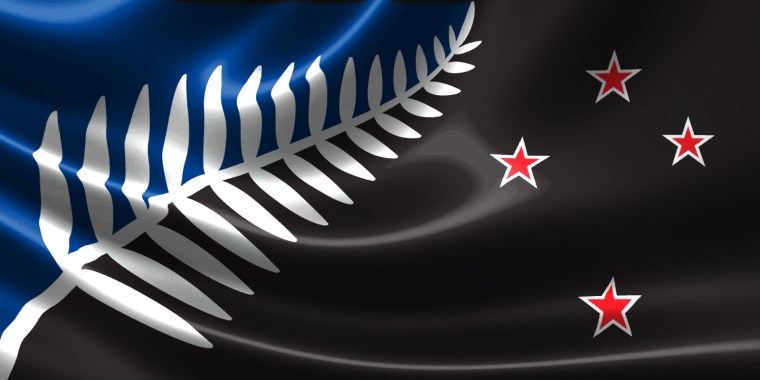Marc-William Palen
History Department, University of Exeter
Follow on Twitter @MWPalen
From the hidden history of African decolonization to erasing New Zealand’s indigene symbols, here are this week’s top picks in imperial and global history.
A Secret History of African Decolonisation
Joanna Warson
History Today
If recent revelations surrounding the ‘secret archive’ of Foreign and Commonwealth Office (FCO) documents have done anything, it is to underline how much is still unknown about the history of the British Empire. With over a million documents alleged to be hidden from the public and historians alike by the British government, it is apparent that the history of Britain’s colonial exploits may require substantial revision.
When one moves beyond a UK-centred approach to examine connections between colonial empires, the number of gaps in the existing picture of Britain’s imperial past increases still further. Little is known, for example, about the part played by France in the decolonisation of Anglophone Africa and its aftermath. Yet, as a re-examination of the history of Southern Rhodesia’s Unilateral Declaration of Independence (UDI) reveals, France played a significant – and frequently overlooked – role in the end of British rule on the African continent. [continue reading]
Arrival: the John Wickliffe and 23 March 1848
Anthony Ballentyne
Global Dunedin
Key transitions in New Zealand history often start with boats: think of the waka that conveyed Polynesians to Te Ika a Māui and Te Waipounamu, Abel Tasman’s Heemskerck and Zeehaen, or James Cook’s Endeavour. The story of Otago’s systematic colonisation begins with two ships, the John Wickliffeand the Philip Laing.
The John Wickliffe, a 662-ton vessel which functioned as the Otago Association’s storeship but also carried 97 passengers, arrived at Kōpūtai or Port Chalmers on 23 March 1848. Its passengers were pleased that its passage was a neat 100 days: but this figure was only accurate if this calculation was made from 14 December, the date it sailed from Portsmouth. In fact, the John Wickliffe originally departed from Gravesend on 24 November 1847, but inclement weather and contrary winds thwarted its early progress and it took almost three weeks until it finally made positive progress. (In a later blog post we will explore the nature of the voyage itself and also the history of the Philip Laing which arrived 24 days later on 15 April 1848.) [continue reading]
China’s ‘Comfort Women’
Lucy Hornby
Financial Times
The sound of clay pots smashing against a stone floor shattered the cold spring morning. Zhang Xiantu woke. Japanese soldiers were in her home, breaking bowls as they searched for food. Zhang, 16 and just married, tried to run. But she couldn’t run fast enough: as the daughter of a landowner, she’d had her tiny feet bound and broken when she was a child.
Sitting in her village home in Yu County, Shanxi province, the newlywed so rudely awoken in 1942 is now a birdlike widow, grey hair pulled back from her lined face, her breath raspy from lung disease. “When I dream of that time, I always dream of being seized,” she says. “I was so terrified.” There was no escape. “The soldiers came and they found us . . . The streets were full of people running in every direction.” Her breathing slows, and becomes harsher. “Aiyya . . . I’ve forgotten everything else.” Zhang spent the next 20 days a prisoner. Locked in a neighbour’s house, she was prostituted as a “comfort woman” for the Japanese soldiers battling to control northern China. “I almost died of fear,” she says. [continue reading]
The Union Jack and the Southern Cross
Miri Davidson
New Inquiry
In 2014, Prime Minister John Key of New Zealand, called for the end of history. New Zealand’s history had lingered for too long: 174 years too long, to be precise. The history Key referred to centers on a number of unresolved breaches of the Treaty of Waitangi, which was signed in 1840 between a number of tangata whenuaTangata whenua: people of the land and the British Crown, and which—for all state purposes—is understood as New Zealand’s founding document. When Key campaigned for election in 2008, one of his promises was to achieve “full and final” settlements between the Crown and all iwiIwi: tribe, extended kinship group, people in New Zealand, who claimed that the settlers “large-scale theft of land constituted a breach of the terms of the Treaty.”
“Full and final” is a legal term used in debt settlement cases, generally when it’s a case of settling for less. Rather than continuing a protracted relationship, the owing party offers a lump sum and a chance to tie the matter up, call it quits. In the New Zealand case, achieving full and final settlements for all iwi means that no further “historical” claims against the Crown may—theoretically—be made. Māori views on this matter are as varied and complex as its practical ramifications are for iwi and hapu. But in the eyes of the settler, full and final settlements suggest a squaring of the balance sheet of colonialism. No longer indebted to his place of settlement, nor to its indigenous inhabitants, he is no longer a settler at all, simply a citizen. A happy zero. “We are impatient to stop looking in the rear-view mirror at grievances past,” Key said, “and to instead shift our eyes to the challenges of our shared future as New Zealanders.” [continue reading]


You must be logged in to post a comment.